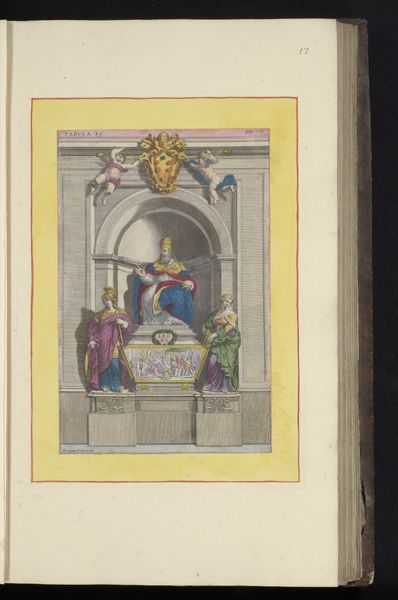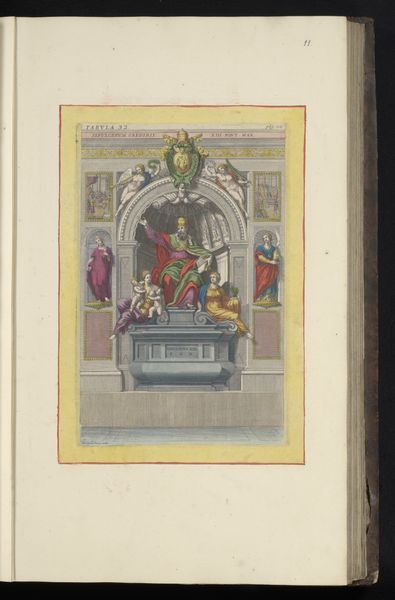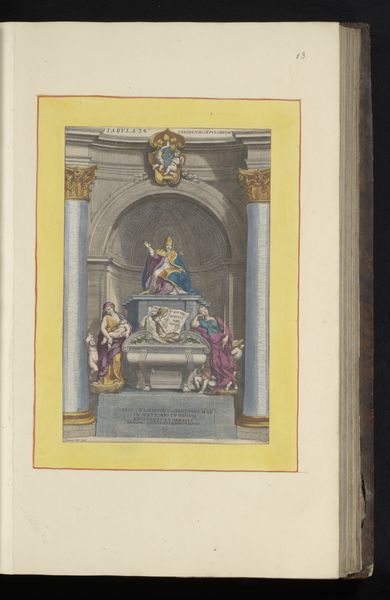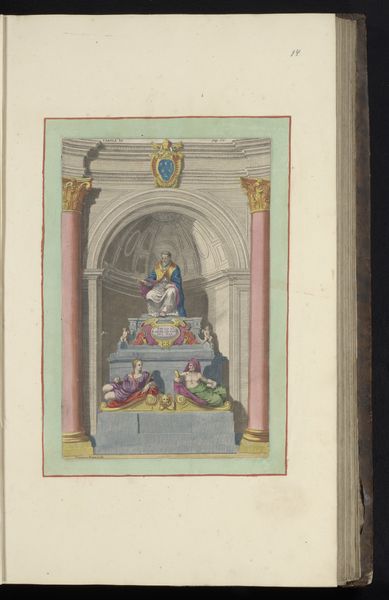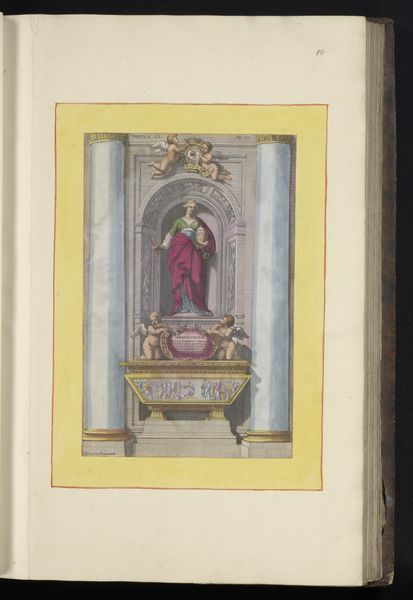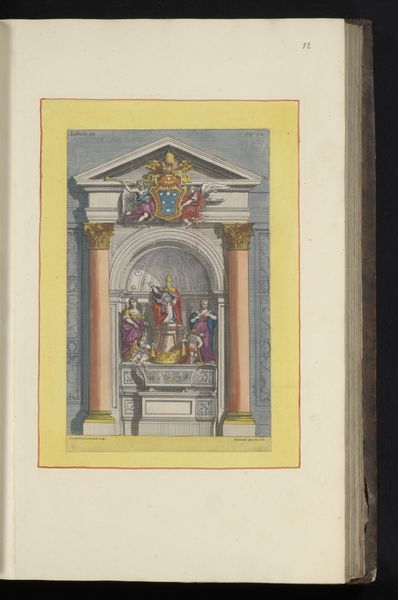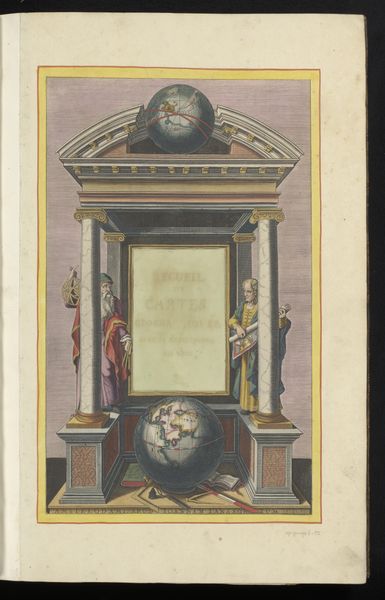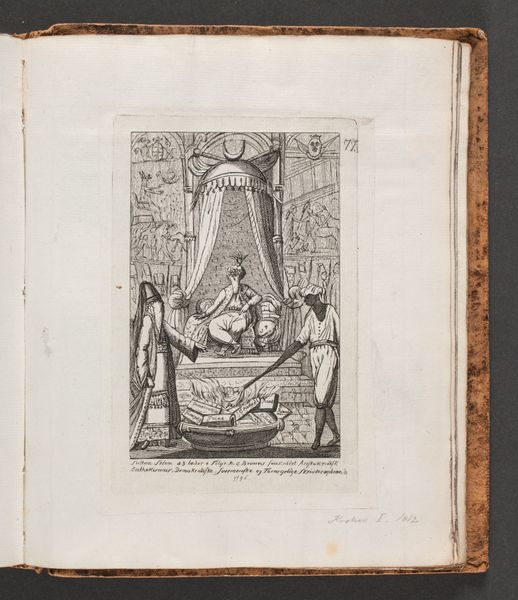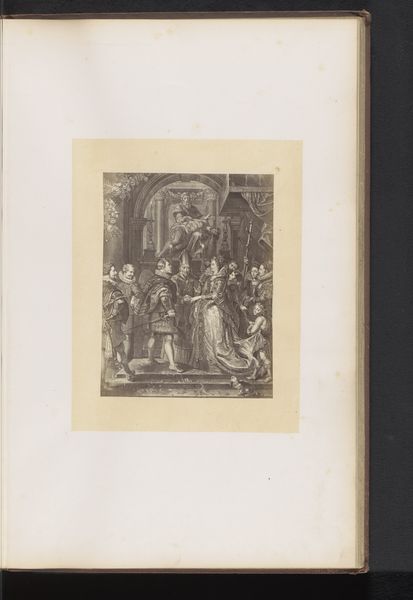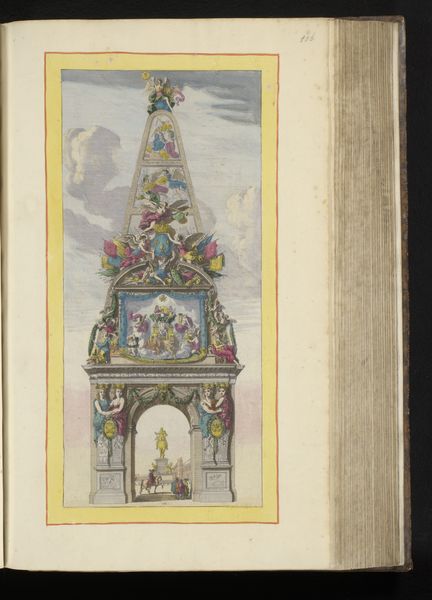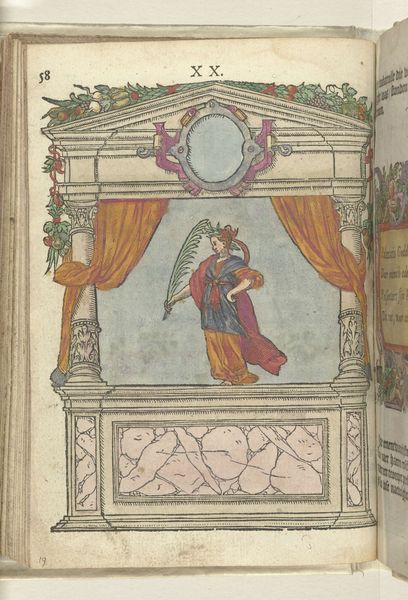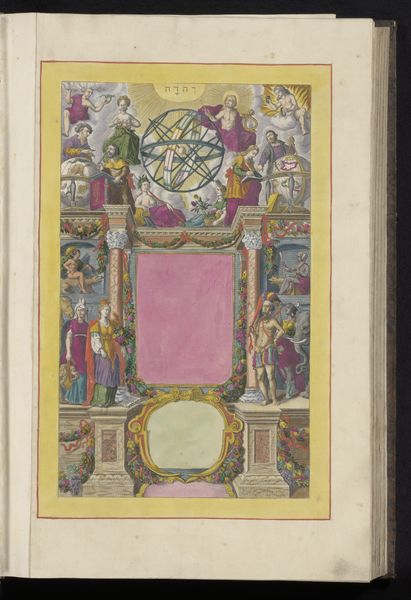
print, engraving
#
baroque
# print
#
figuration
#
coloured pencil
#
line
#
history-painting
#
engraving
Dimensions: height 304 mm, width 197 mm
Copyright: Rijks Museum: Open Domain
Curator: Right, let’s spend some time with this print: it's called "Graf van paus Alexander VII," or "Tomb of Pope Alexander VII," made between 1696 and 1717, engraved by Arnold van Westerhout. It feels like a glimpse into a bygone era, wouldn't you say? Editor: Absolutely. The first thing that strikes me is the sheer theatricality of it all. It's like a stage set for mourning. A very baroque, gilded cage for grief. What about you? Curator: What captures my eye, is the dance between the literal and the allegorical here. The central sculpture, the Pope in prayer, feels grounded, yet he's surrounded by these figures plucked from myth – almost operatic in their emotion. Is that a reference to Caritas that I spot? Editor: Sharp eye. These figures—Caritas representing charity, Iustitia depicting justice—embody virtues central to Alexander VII's papacy, yes. See how their poses convey a narrative, their presence elevating this tomb beyond mere commemoration into a statement about power, virtue, legacy even. That colored pencil lends an interesting air here. Curator: And that statement is rooted in symbol, isn't it? The tomb itself becomes a vessel carrying meaning. Look at the columns, those classical references. Each element speaks to a tradition, a hierarchy...a visual language that reinforces the Pope’s authority, his eternal presence. Editor: True. Consider, too, how the engraving, with its lines and delicate shading, both reveals and conceals. It hints at the textures of the marble, the weight of the robes, but stops short of true realism, instead imbuing everything with an almost ethereal quality, which only adds to the mystique surrounding papal power. Curator: But here, van Westerhout has transformed stone into almost shimmering lines and shades. It makes you wonder how closely it matched the real marble structure. It gives an interesting peek into the world of faith and visual storytelling from centuries ago, isn’t it? Editor: Precisely. This work embodies not just faith, but also how that faith gets projected, remembered. A reminder that images—whether etched in metal or carved in stone—hold power long after their subjects fade. Curator: In a way, both Alexander's tomb and this print become eternal. They morph into powerful echoes and icons within culture. Editor: Indeed. Perhaps we all should think a little more about the symbols that shape our own perspectives. Food for thought...
Comments
No comments
Be the first to comment and join the conversation on the ultimate creative platform.
